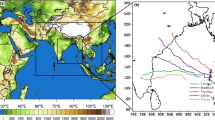Summary
The storm formed over the warm waters between Sicily and Libya in a region of weak flow ahead of a cold, upper-level trough. During its 5-day lifetime it moved erratically before dissipating off the Turkish coast. As the storm developed, it diminished in size, assuming a hurricane-like appearance in satellite imagery. Ships near the vortex center reported near-hurricane force winds.
An attempt to simulate the storm development with a state-of-the-art mesoscale model met with mixed success. The most serious errors occurred after the initial deepening when the predicted track departed substantially from the observed and the contraction of the storm to mesoscale dimension was missed. A number of forward and adjoint sensitivity experiments were conducted to identify factors influencing the development and to explore ways of improving the prediction. The most realistic prediction was achieved by implanting a vortex, in the manner commonly done in tropical cyclone prediction, at an early stage in the storm’s history and by using, in addition, adjoint sensitivity to further modify the initial conditions.
Similar content being viewed by others
Author information
Authors and Affiliations
Additional information
Received January 3, 2000 Revised July 11, 2000
Rights and permissions
About this article
Cite this article
Reed, R., Kuo, YH., Albright, M. et al. Analysis and modeling of a tropical-like cyclonein the Mediterranean Sea. Meteorol Atmos Phys 76, 183–202 (2001). https://doi.org/10.1007/s007030170029
Issue Date:
DOI: https://doi.org/10.1007/s007030170029




